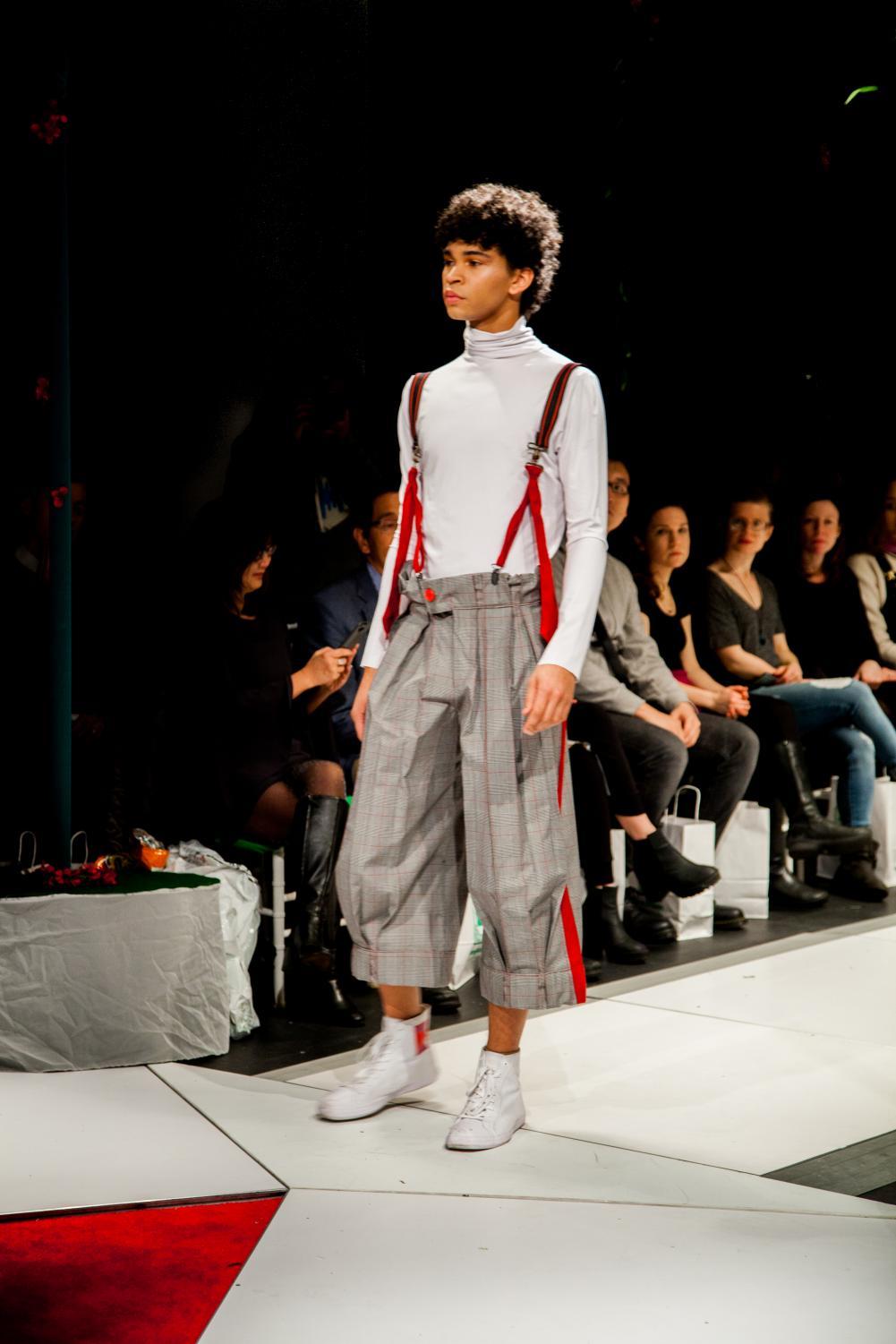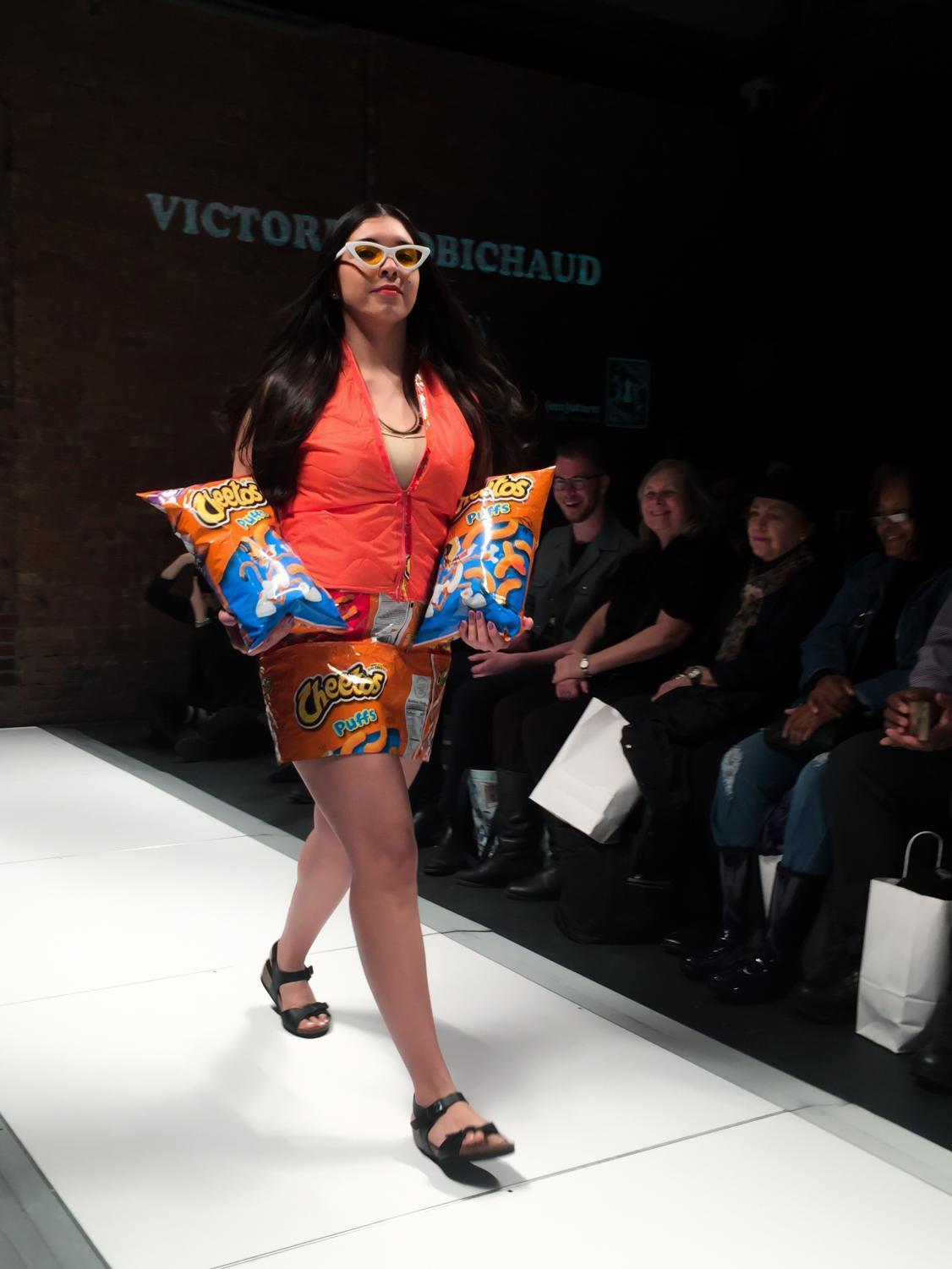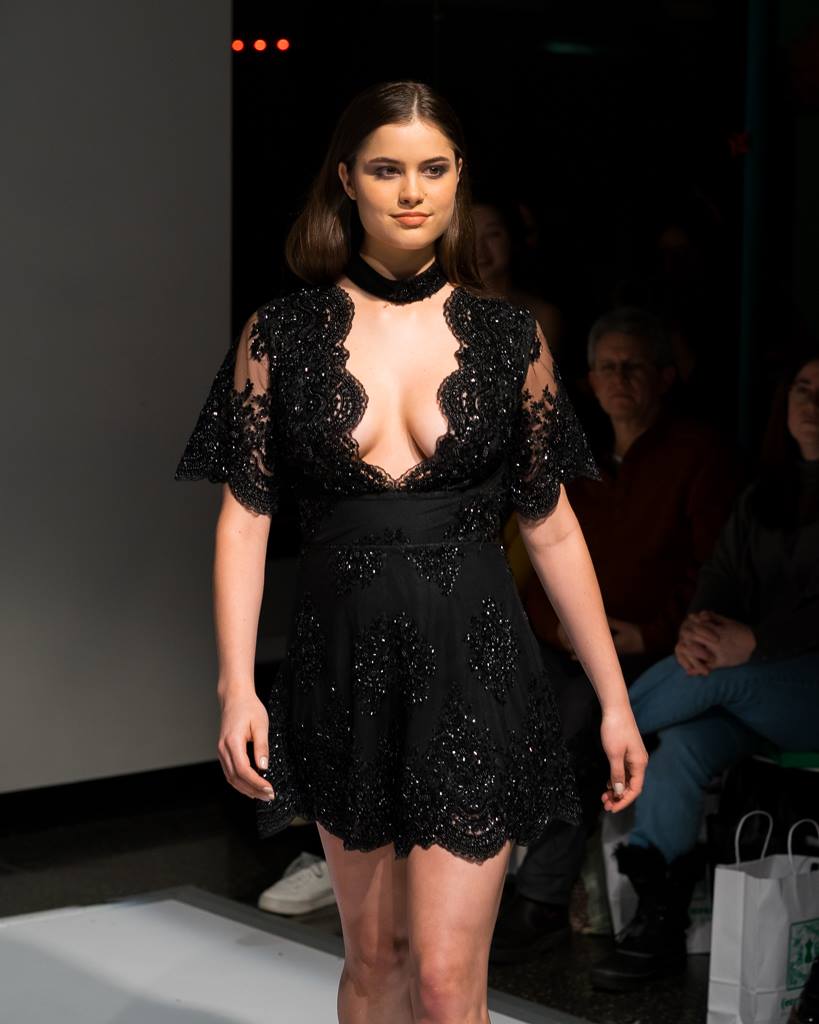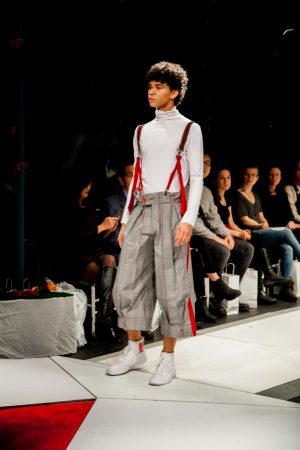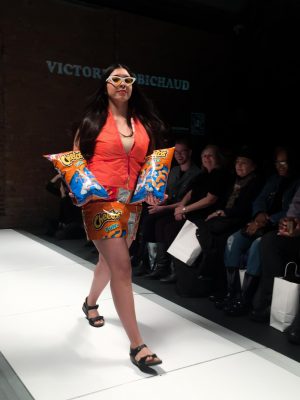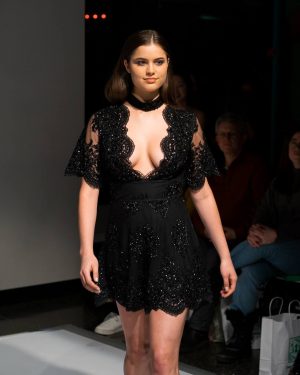Gallatin Designers Celebrate Eco-Friendly Fashion
March 5, 2018
“Do you like seafood? Well, you might be eating plastic,” Gallatin alumna Shayna Feuer and Steinhardt senior Taylor Ralph sang at the Gallatin Fashion Show on March 3. Their performance brought chuckles among the audience, but more notably, a message: the polyester fibers from your cheap garments wash into the sea and do all sorts of harm. These calls for increased social awareness didn’t come from nowhere as the theme for this year’s fashion show was (eco)uture — a tribute to the fashion show’s first theme in 2010. (eco)uture wishes to celebrate Mother Earth and sustainable fashion.
Student and alumni designers addressed issues like toxic dyes, pesticides, plastic polluting waters and textile waste from fast fashion trends. The runway was graced by bright miniskirts made from Cheetos packets and floor-length black embellished gowns alike. If you couldn’t be there on Friday night, here’s what you missed:
The show opened with Feuer’s collection, Ocean Flor. Her runway was illuminated by beautiful, calming projections of sunlit water. Her looks, however, painted another picture: shimmering fabrics referencing the waves, sand, even the scales of fish were interrupted by references to human waste such as a large fishnet draped over the shoulders, plastic bags around the neck, waist and hem, plastic chokers and broken shell necklaces. This display in conjunction with NYU alumna Madeline Dolgin’s use of natural non-toxic dyes and renewable resources like paper in her collection, Weathering Away, called attention to the human destruction of the environment.
The show then progressed to the most high-spirited and humorous part of the night: Gallatin alumna Victoria Robichaud’s collection, TRASHWOMEN. It juxtaposed literal trash like plastic Cheetos bags with symbols of cultural trashiness like reality TV, memes and streetwear trends. Her introductory video mimicked TV interviews with narcissistic celebrities, and models rocked the runway with clout glasses, a full container of Tide Pods and literal trash bag dresses. They they pulled it off with a hilarious, brash confidence.
Most collections focused on giving old pieces of clothing a second life. In Gallatin senior Ryan Andrewsen’s In Situ, old pieces were given new purposes, such as red ties used as suspender straps. Gallatin senior Victor Leonard reworked scrapped pieces of denim, one of the industry’s most environmentally damaging products due to its dyes and acid washes. Gallatin alumna Rachel Wang used beautifully printed fabrics discarded from previous shows in her collection, Opus Caementicium, and Gallatin senior Jacqueline Sushan made a statement by instructing models to carry scraps from sewing onto the runway in clothbags in her collection, (Re)claim. The pieces were unique, yet all effectively embodied the message of reducing waste.
One show combined multiple designers under a single project, which was for a Gallatin seminar dedicated to design in an era of climate change. Students were challenged to make a life jacket into a fashion statement. Some decorated it with images of beaches that will soon be eaten up by rising sea levels, others deconstructed the jacket and re-purposed the material into hats, shirts, a reversible bomber jacket and even a chastity belt. The diverse range of the seven designs was both interesting and compelling, and appealed to other relevant issues like the refugee crisis along with the eco-friendly focus of the night.
To counter the trends of fast fashion and textile waste, many designers focused on creating high quality, long-lasting pieces. Gallatin first-year Sanjula Singh’s collection, Bellezzo della Natura, and Selly Djap’s collection, Trauma, opted for intricate, time-consuming embroidery referencing the detail of haute couture. Selly said that the collection depicts her personal response to dealing with trauma.
A piano rendition of Amazing Grace, which was playing in the background, complimented the graceful, permanent feel of the resolution both she and her work exemplified.
The Gallatin Fashion Show was a remarkable display of talent and keen social awareness among the young designers. It told both a celebratory yet cautionary tale of Mother Nature’s beauty — this is (eco)uture.
Correction March 9: A previous version of this article misquoted Gallatin alumna Shayna Feuer and Steinhardt senior Taylor Ralph saying, “Do you like fish? Well, you’re eating plastic.” Feuer and Ralph actually said, “Do you like seafood? Well, you might be eating plastic,” during the opening remarks. WSN apologizes for the error.
A version of this article appeared in the Monday, March 5 print edition. Email Shannon Hu at [email protected].

























































































































































